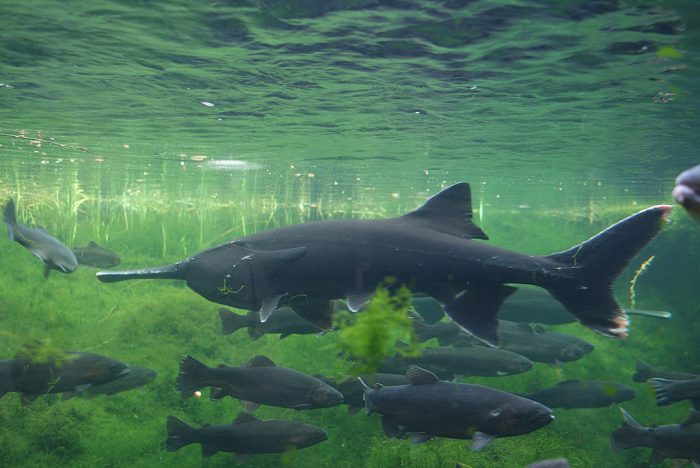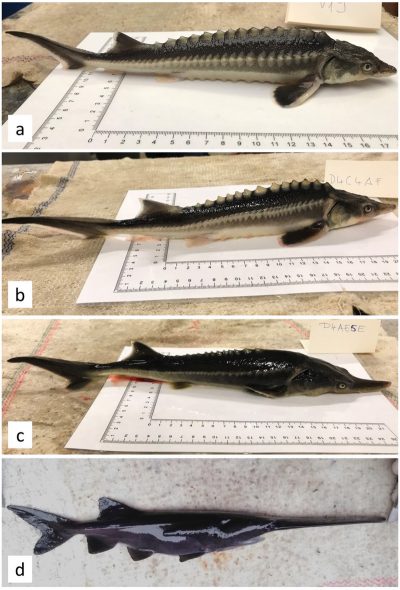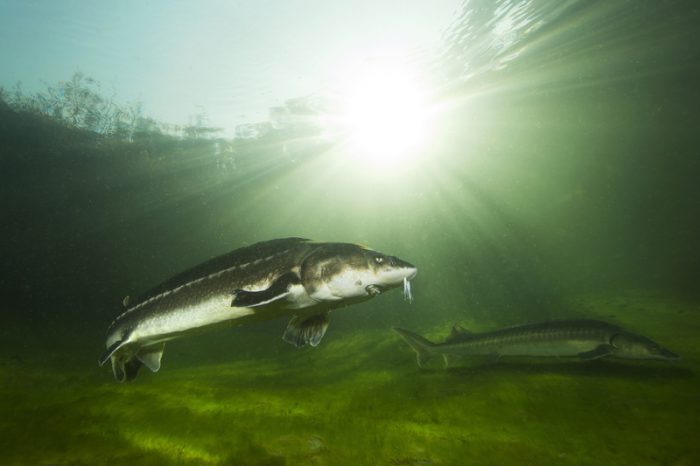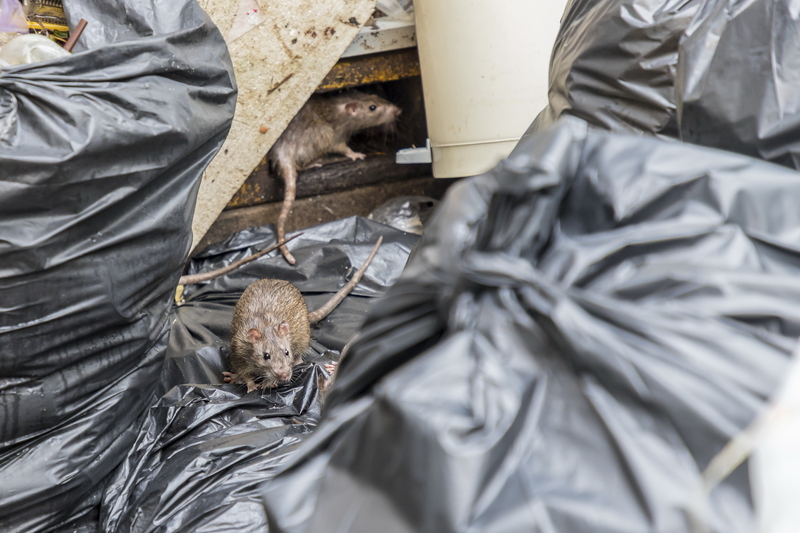Over the past 70 or so years, Russia and the United States haven't exactly gotten along. But apparently, that animosity only affects humans. Fish from each country get along just fine!
Take the Russian sturgeon and American paddlefish. Sure, these two fish live on opposite sides of the Earth. But both are endangered, especially the sturgeon. Both are considered living fossils, having remained essentially unchanged since the days of the dinosaurs. And both can have babies together.
With some help, that is.
Meet the sturddlefish—the world's strangest and newest fish species!
How it happened

The American paddlefish shares many traits with the Russian sturgeon, including a structure made of cartilage, not bone, and scaleless skin. (Wikimedia Commons)
The sturddlefish was an accidental creation by a team of Hungarian scientists. The goal was to try and find a way to save both fish species. The fish is at the point where experts fear it will not be able to reproduce enough in the wild. It will need help with breeding programs in captivity.
As a part of the process, they were fertilizing eggs of each fish with the sperm of that fish in a lab. By pure accident, they mixed up the sperm and eggs, putting paddlefish sperm with sturgeon eggs. To their amazement, this mix not only produced babies that hatched, but a majority of those fish grew up into adults!
A rare feat

Four different versions of sturddlefish. Each one has a different blend of sturgeon and paddlefish DNA. (Wikimedia Commons)
Such hybrids are very rare. Usually, even animals with very similar DNA are not able to cross-breed like this. The process just doesn't work. So the fact that not just one, but many of these sturddlefish are being born is remarkable.
Of course, it helps that both fish are similar in structure and that they share a common ancestor (even if that goes back around 180 million years ago). And scientists believe that even though this was an accident, it helped them learn valuable lessons about each fish that may help future breeding programs be more successful.
But just don't expect sturddlefish to suddenly take over the world. Not only do scientists say that sturgeons and paddlefish couldn't recreate this accident by breeding in the wild, but sturddlefish themselves are almost certainly infertile, meaning they can't have babies of their own. So enjoy the sight of them while you can!
 One of the two fish involved in the sturddlefish experiment—the Russian sturgeon. (Photo
One of the two fish involved in the sturddlefish experiment—the Russian sturgeon. (Photo 








OoO OMG
Ooooooo! Cool